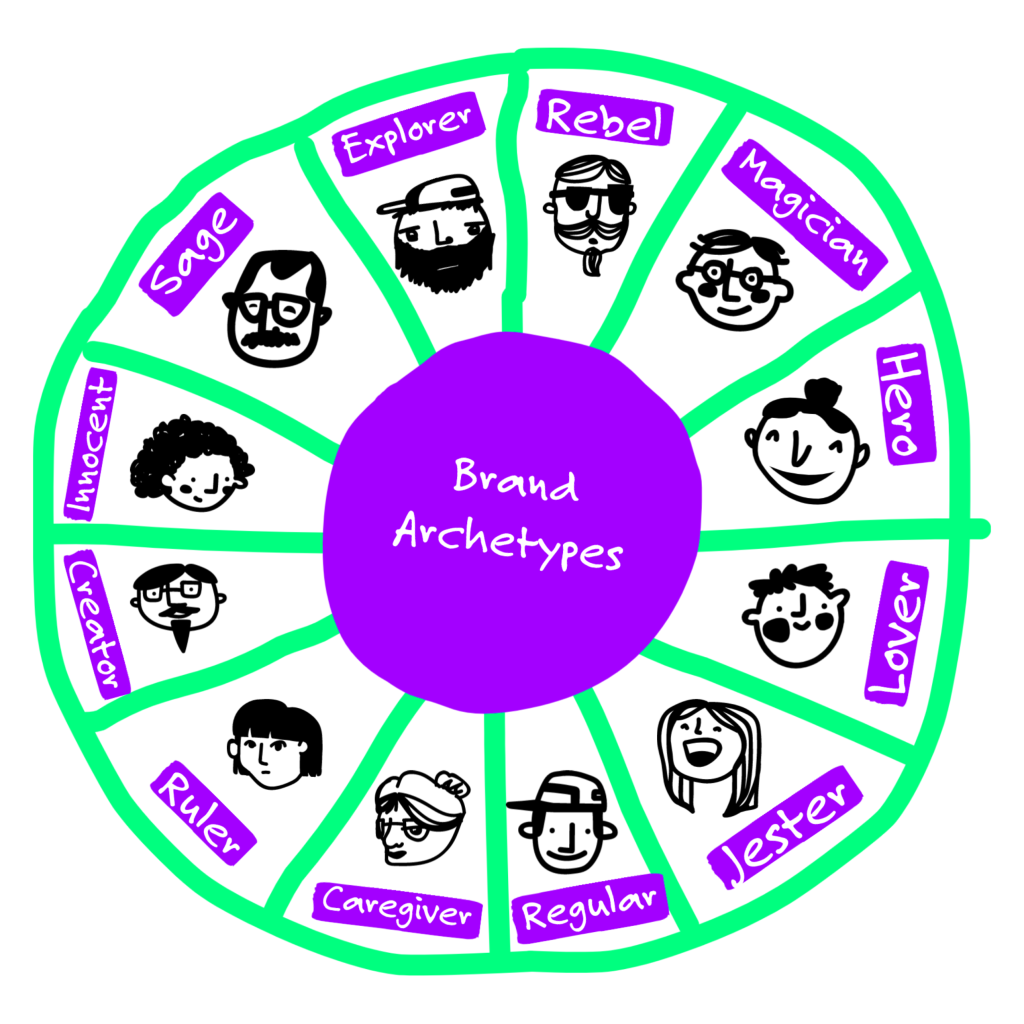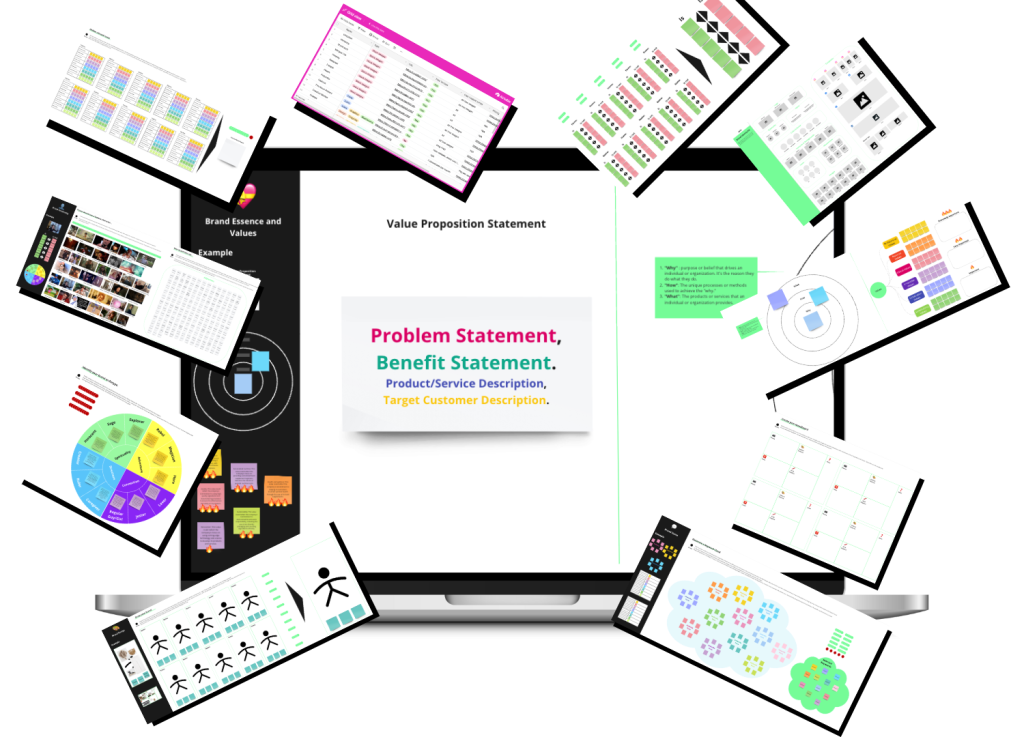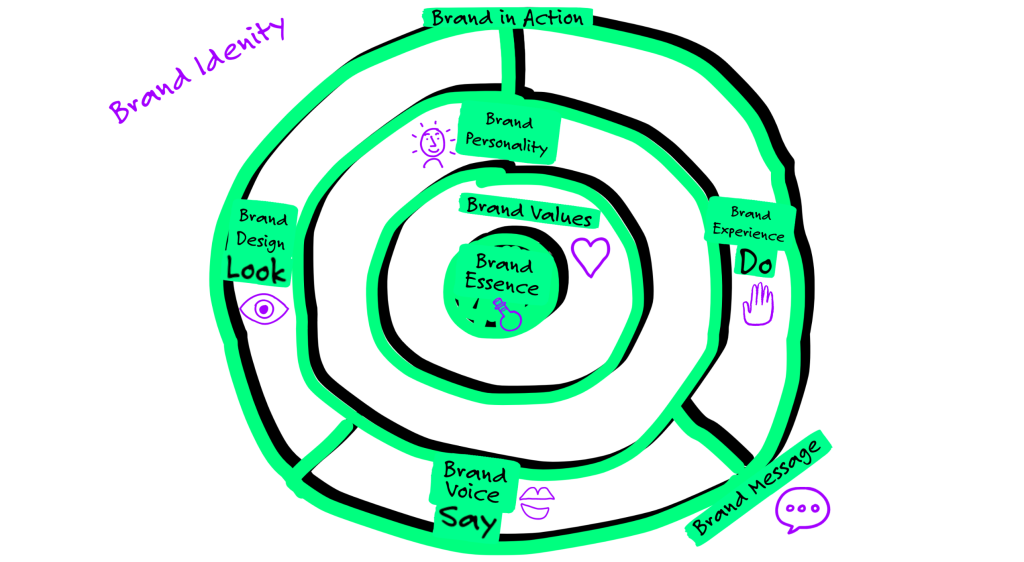💡 What is a Branding Strategy?
Beyond a mere visual identity, your brand serves as the essence of how you wish to be perceived by your audience. A branding strategy is your plan that outlines how you aim to create a distinctive and lasting impression in the minds of your target audience through intentional design, messaging, and overall customer experience, based on a robust brand identity, encompassing your brand essence, values, personality, and action.
🚀 Why is Branding Strategy Important?
For startup founders, a well-defined branding strategy is crucial. It not only helps your product or service stand out but also fosters customer loyalty and long-term relationships. A well defined branding strategy and design will help you to create:
- Memorability: A distinct brand stands out and remains in the minds of customers.
- Differentiation: Sets your product or service apart from competitors.
- Customer Loyalty: Builds trust and encourages repeat business.
- Perceived Quality: Creates a perception of quality and trust.
- Effective Communication: Clearly communicates the brand’s values and benefits.
- Long-term Success: Lays the foundation for lasting success and growth.
🗒️ Branding Strategy Step-by-Step
Crafting a compelling brand requires a meticulous strategy. In this step-by-step guide, we’ll navigate through defining your brand essence, values, and purpose, identifying your brand’s personality, and brand design and defining a brand name and tagline.
✅ Step A: Define your Brand Essence & Values
- Craft a Value Proposition Statement: Begin by formulating a concise value proposition statement. Summarize the core elements, including the problem your brand addresses, the benefits it offers, the category it belongs to, and its target customers. This statement serves as a foundational message representing your brand’s value.
- Define Brand’s Purpose with Golden Circle: Utilize the Golden Circle framework to define your brand’s purpose. Identify the ‘why you do what you do,’ ‘how you do/offer what you do,’ and ‘what you offer’ of your business, establishing a deeper understanding of the motivations and goals behind your brand.
- Define your Values: List your brand value thinking for example in the following value categories: professional, personal, ethical, innovation, collaboration, and sustainability. Prioritize these values based on their importance, providing a structured foundation for your brand’s ethical and operational principles.
✅ Step B: Identify your Brand Personality
- If Your Brand Was a Famous Character…: Immerse your team in a 30-minute exercise where each member envisions your brand as a famous character. Select attributes, traits, or personalities that align with this character, promoting a unique exploration of your brand’s identity. Share these insights and engage in discussions to refine your brand’s persona.
- Identify Adjectives: Define adjectives that both describe and don’t describe your brand. Choose pairs of adjectives that best capture the nuanced characteristics of your brand, facilitating a deeper understanding of its personality. This exercise refines the language used to communicate your brand’s essence.
- Align with Archetypes: Conclude this step by aligning your brand with one or more of the 12 universal archetypes. Engage in discussions and voting to determine which archetypes best represent your brand’s personality.

✅ Step C: Develop your Brand Design
- Dress Your Brand Exercise: To develop your brand design you can for example use the “Dress your brand” exercise, imagining your brand as a person. Create a complete look by putting together a digital or even physical collage of images composing a complete outfit, and collaboratively decide on the final brand appearance. This task encourages a visual exploration of your brand’s identity.
- Create Mood Boards: Transition to creating mood boards based on the chosen style. Utilize platforms like Unsplash and Google Fonts for inspiration. Each team member creates their own mood board either physically or digitally (e.g. using Miro)
✅ Step D: Define Brand Name & Tagline
- Generate a Keyword Cloud: Initiate the process by generating a keyword cloud through group discussion. Consider the value proposition, benefits, mission, vision, and values. Participants brainstorm, vote on keywords that describe the brand and finalize the selection as a group.
- Define Brand Name: Spend 40 minutes generating brand name ideas individually. Vote, discuss, and select a favorite brand name, ensuring each participant has one vote. Conclude with a 15-minute group discussion, finalizing the brand name with the decider having the final vote.
- Define Tagline: Similarly, spend the first 15 minutes generating tagline ideas individually. Vote and discuss choices for 10 minutes, and make the final selection. Different tagline types are explored, enhancing the brand’s messaging strategy.
✅ Step E: Create a Brand Identity Kit
- Define Color Scheme: First work to define your color scheme. Choose colors based on meanings and associations, considering cultural and psychological aspects. Utilize tools like Adobe Colors or Color Hunt to create harmonious palettes using various methods.
- Choose a Font: Next dedicate some time to select fonts aligned with your brand’s personality and tone. Utilize tools like Google Fonts or Adobe Fonts to discover and experiment with different fonts, emphasizing consistency across all brand materials.
- Create Your Logo: Devote to creating your logo using AI logo maker tools or graphic design software. Ensure the logo encapsulates brand values, personality, and mission. Generate variations suitable for different use cases.
- Find Images, Backgrounds & Textures: Choosing relevant and high-quality images from platforms like Unsplash, Pexels, or Pixabay. Ensure these visuals align with brand values, personality, and consistency, serving as a foundation for websites and templates.
- Design Graphics & Templates: Conclude the process by designing graphics and templates for various brand touchpoints using drag-and-drop tools like Adobe Express or Canva. Prioritize consistency to establish a cohesive brand identity across materials.
In conclusion, establishing a strong brand identity is a critical aspect of a startup’s success. Through a well-defined Branding Strategy and Design, founders can create a memorable and differentiated presence in the market. Taking the time to develop a clear brand essence, values, and personality contributes to building lasting relationships with customers.

Get Ready-to-Use Templates and Practical Guidances . 🚀
Check out our basecamp for founders for practical guidance and templates on Market Environment Analysis and many more business building methodologies.

